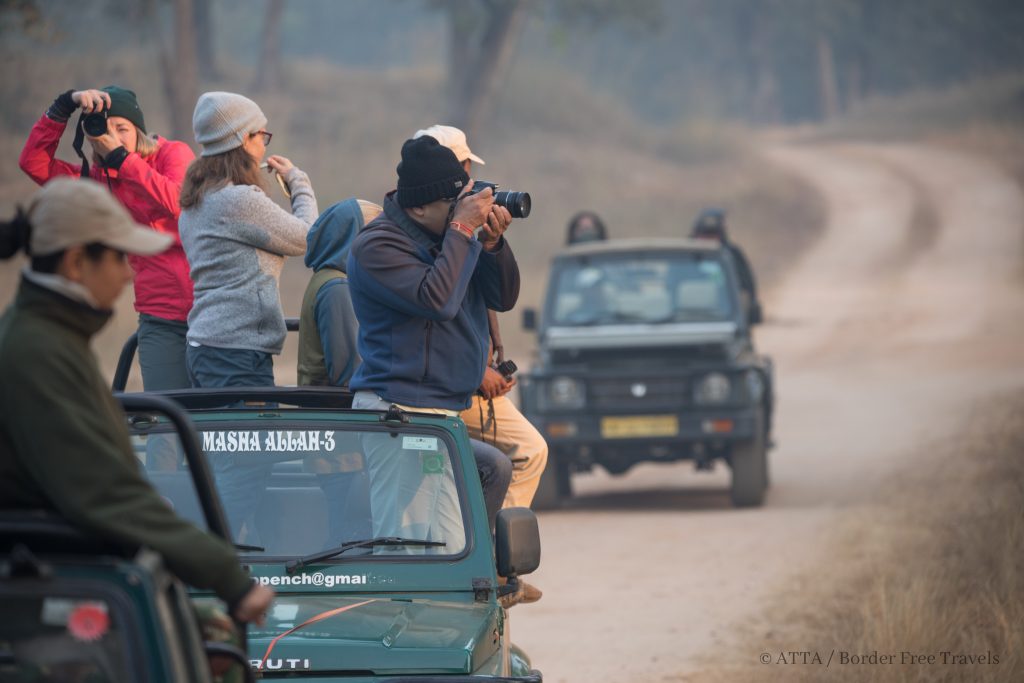From bird watching in Costa Rica to spotting tigers in India, wildlife tourism entices travelers to all corners of the globe. Unfortunately, in many of the destinations where wildlife tourism could positively impact local economies with jobs and sustainable tourism development, poaching and global wildlife trade also offer a lucrative way for people to make money. However, a recent report distributed by the World Travel & Tourism Council (WTTC) notes a particularly compelling reason to lean toward wildlife tourism versus trade: Each year, the former yields five times more revenue than the latter.
According to The Economic Impact of Global Wildlife Tourism: Travel & Tourism as an Economic Tool for the Protection of Wildlife - August 2019, wildlife tourism directly contributed $120 billion USD to economies plus benefits throughout the supply chain in 2018. Further, it supports 21.8 million jobs directly or indirectly across the globe. In some parts of the world, the reliance on wildlife tourism is particularly significant: In Africa, it makes up 36.3% of the travel and tourism sector; in Latin America, it is 8.6% of the sector; and in Asia and the Pacific, it is 5.8%.

On the other side of the equation, the illegal wildlife trade is worth up to $23 billion USD annually. In addition to threats from trafficking, wildlife is increasingly threatened by habitat destruction and climate change. Knowing wildlife tourism is so much more financially viable for communities, versus participating in poaching or trafficking protected species, is a compelling reason to mindfully develop tourism initiatives in this sector.
From the outside looking in, it makes sense to protect wildlife not only from an environmental perspective but also from a long-term financial lens. Empowering local communities to support and protect wildlife habitats encourages them to become ambassadors for wildlife, climate activists, and developers of sustainable tourism with financial stability long into the future. Yet, fostering a mindset focused beyond the day-to-day isn’t always easy for local communities who struggle with wildlife that kills livestock, especially when these communities might reap immediate financial benefit from poaching. Nonetheless, several case studies demonstrate that helping these communities pursue livelihood opportunities, providing poacher compensation and educational workshops, and spreading monetary benefits into buffer zones (areas right outside of national parks and protected conservation areas) can help turn the tide from unsustainable wildlife trafficking to sustainable wildlife tourism.
The first African country to incorporate environmental protection into its constitution, Namibia serves as an example of how supporting buffer zone communities can help wildlife tourism flourish. Several non-governmental and conservation organizations have established local partnerships supporting the country’s conservancy program. This program balances the needs of local people and wildlife, which has resulted in reduced poaching, rebounding wildlife populations, and economic growth. In Assam, India, the International Rhino Foundation (IRF) established a small-grants program for on-the-ground organizations that support community development and awareness campaigns. These help address food security and support IRF’s initiative to establish a network of informants to help prevent rhino poaching and identify poachers and traders working in the area. And in the Amaltari Buffer Zone, Nepal, 287 volunteers with the Community-Based Anti-Poaching Unit help keep endangered wildlife safe. From 2009 to 2018, the number of tigers in Nepal has almost doubled, and the number of tourism and hospitality businesses have increased as well.
Though it takes dedicated time, effort, and resources to establish the groundwork that leads to these kinds of results, the benefits are clear. According to the report, case studies show that protected areas where most wildlife tourism takes place are undergoing rapid development in response to population growth and a need to protect biodiversity. The financial benefits from resulting wildlife tourism are expected to greatly exceed the approximately $10 billion USD in annual costs needed to manage these areas.
In her opening letter to the WTTC’s report, the organization’s president and CEO, Gloria Guevara Manzo, notes her experience in Mexico, where locals protect the wintering hibernation areas of the monarch butterfly in biosphere reserves. In return, they benefit with jobs in conservation, tour guiding, accommodations, and scientific discovery. This benefit ripples out, reaching families and wider communities beyond the buffer zones.
Beyond those wider communities is a planet that benefits from biodiversity and wildlife that offers far greater value protected, appreciated, and alive rather than trafficked and traded.
